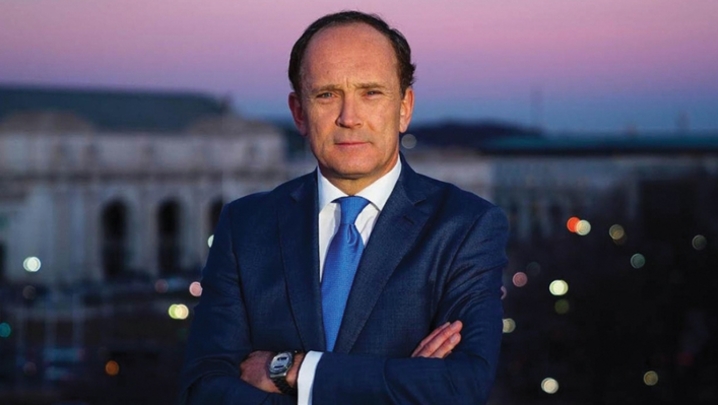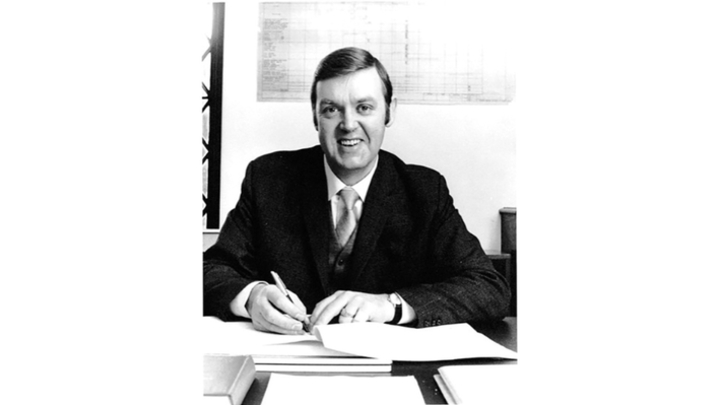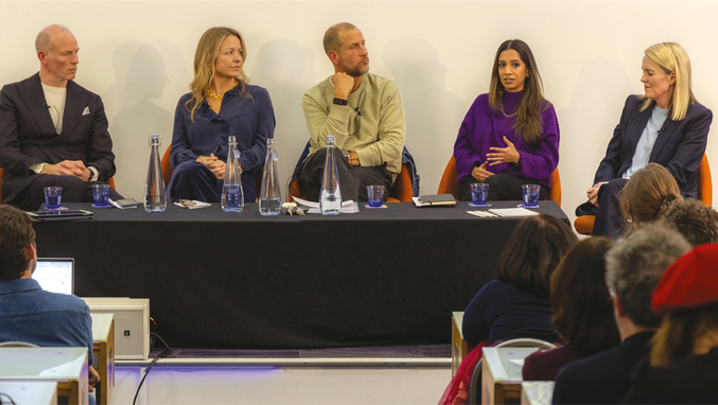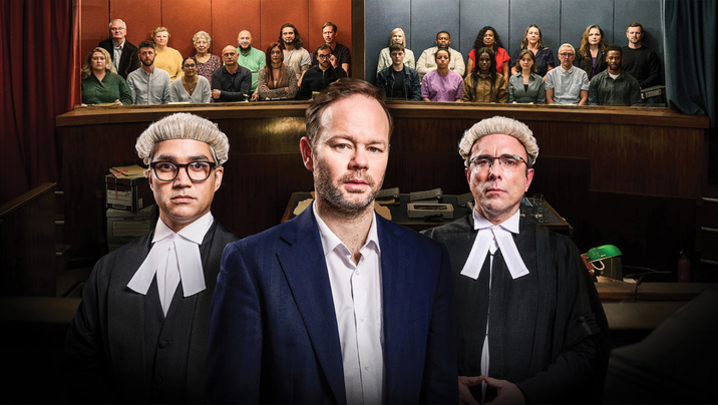There was a time when we all sat down together to watch the TV. Not any more. Stefan Stern guides us through the jungle of today’s TV tribes.
Spectrum scarcity" was not the name of a 1970s prog-rock band, but it dates back to a similar era. We didn't all realise it then, but the days of a three- or four-channel world, with most of us watching the same programmes, were already numbered.
No one, I think, would suggest reviving Ludovic Kennedy's old BBC Two show Did You See...?, since these days the answer to the question in the title would so often be, "Well, as a matter of fact, I didn't..."
Few programmes can command the sort of mass audiences that were quite common 30 or 40 years ago. And only harrumphing old fools like your correspondent ask for quiet as the Greenwich Mean Time pips sound at the top of the hour, or plan their evening around an appointment with the Ten O'Clock News.
No – this has all broken down. Families may share a living room, but each member will often be consuming media in their own personal way.
Thanks to digital technology, we are "alone, together", in the words of Prof Sherry Turkle from MIT. New groupings have formed – TV tribes, if you like. They have their own tastes and preferences. If you were to unleash David Attenborough or Desmond Morris to investigate these new groupings, here is what they might find.
The soap opera set
This traditional crowd still make time to check in with their favourite TV families and sagas at regular times in the week. The soaps remain influential, not least on speech patterns.
Did people always use the EastEnders cries of "Yer 'avin' a laugh, aintcha?!" and "It's doin' my 'ed in!", or have they been popularised by the show? And as for the permanently rising intonations of Aussie soap viewers... don't get me started. It is doing my head in.
 To their fans, soaps offer something for everybody, a glimpse of a parallel world, and comfort that you are not struggling alone. You can see medics hard at work in Holby City and Casualty, saving other people's lives while struggling to make sense of their own.
To their fans, soaps offer something for everybody, a glimpse of a parallel world, and comfort that you are not struggling alone. You can see medics hard at work in Holby City and Casualty, saving other people's lives while struggling to make sense of their own.
You can see chirpy Northerners (Corrie), whingeing Cockneys (EastEnders) or spunky youths (Hollyoaks). The Scouse psychodrama of Brookside is, sadly, no more and is much missed.
Soap fans huddle up to create a sense of order and rhythm in their hard-pressed lives. It may have been another shit day, but a familiar signature tune signals release and escape, if only temporarily.
Of course, the startling fact for telly fans is that some people are still much happier listening to The Archers... [cue EastEnders doof doof doof sign-off music].
Some children were brought up in homes in which "commercial television" was banned. Perhaps they grew up to become the ultimate highbrows, favouring BBC Four, Alan Yentob, Sky Arts, and not a whole lot more.
To highbrows, drama serials are acceptable, but preferably they will be from Scandinavia, involve multiple deaths and be subtitled.
History and art programmes are OK, too, and the ancient world is a particular favourite, especially if it involves Mary Beard describing obscene Roman murals and talking about voracious prostitutes and oversized penises. The best filth is highbrow filth.
We should be sympathetic. Highbrows are deprived. They used to watch television to benefit from the insights of Kenneth Clark and Jacob Bronowski. Today they make do with a Bragg or a Schama, which is a good substitute. But still they feel that something is lacking.
They want Huw Wheldon's Monitor to come back. Instead of Richard Dimbleby, they get David and Jonathan. They miss Arena.
Perhaps the answer is to bring back Channel 4's Voices, which famously registered a (technical) zero rating before it was finally axed.
If all the highbrows got together, they could interview each other for the show and guarantee an audience for themselves at the same time.
The 'sporty' set
By their tracksuits shall you know them. And their beer. And the shouting. The growth of multichannel TV has been driven by sport more than any other format. It has been the killer app. And, in fairness, sports coverage has been modernised and improved enormously in the new era.
Of course, hype is inevitable. A dreary, wet, midweek football match between mediocre teams may get pumped up as dramatic and important, but members of the sports tribe will be happy, as long as there is something to watch, action replays to enjoy, and lots of pre- and post-match "analysis" to wallow in.
The sporty tribe is made up of addicts. They need excitement (real or imagined), noise, "drama", and hours and hours of extended coverage. They need stars, or wannabe stars, and lots of greatest matches/fights ever. Again, this is all overblown, but no one in the tribe seems to mind all that much.
For now, there is always another game to look forward to, and another world/European/UK championship of something or other to be watched. And, as the action starts, the sofa will fill up, and the cheering will begin again.
The box set set
Who needs a TV schedule anyway? That is so yesterday. Schedules are for losers. Anyone who is anyone just grabs a box set for a weekend binge session, or creates their own schedule with an hourly dose of preferred viewing. You become the channel controller of your own life, ignoring whatever it is that the hoi polloi are watching.
Box setters are sophisticated. They know quality when they see it, and they don't see it in today's schedules. For them, it is cooler to choose Breaking Bad, Orange is the New Black or Game of Thrones and settle in for the evening.
Also, as is clear from some of those series, the raunch factor in a box set is often much higher. As Ali G would ask of a box set: "Does it guarantee me muff?"
Nothing symbolises the breakdown of the old telly-viewing world more than the spread of box sets. It is almost as though the mainstream channels and networks have ceased to exist.
A rich archive of classic shows may be preferable to new productions. Box setters may also choose to download or stream a new series, such as House of Cards, direct from Netflix, an approach similar to that adopted by...
The online no set set
"Daddy, what is that strange big machine in the corner?" asks the bewildered child who only ever watches programmes on a laptop, tablet or smartphone screen. Sitting down in front of an altar-like telly may come to be seen as an essentially 20th-Century activity.
Just as mass audiences have broken down, so the TV experience may be one to be enjoyed individually. You peer into your own gadget rather than gathering round a big screen.
For the online crowd, legacy TV channels and networks can mean little – and the licence fee can thus seem perverse.
YouTube, BuzzFeed and Vice News reveal and explain the world to them, not the British Broadcasting Corporation.
The online crowd want it free and they want it now. "Live" is less significant to them, unless it really is a breaking news story that they want to follow. For them "live" is when they want to watch something. They, too, have freed themselves from the schedules.
Different media blur into one. It is all social, news, entertainment. Facebook and Twitter provide as much infotainment as any other platform, as well as housing people's social networks. This tribe lives online in every sense.
The Strictly X Factor Apprentice Celebrity MasterChef Baking set
Along with sport and the soaps, this category of show also binds viewers together. Long gone are the quaint days of Opportunity Knocks and New Faces. But these programmes do bring audiences together in quite an old-fashioned way.
It turns out that people love a competition and (virtual) audience participation. Andy Warhol's concept of "15 minutes of fame" has become a reality.
So what, if the claim that "Britain's got talent" is not always borne out by the contestants on these programmes? The contests provide some of those truly rare "water-cooler moments" for millions the morning after.
Do the viewers of these programmes become more enthusiastic or more active cooks/bakers/singers/dancers? It doesn't seem likely. It's still only telly, being watched passively from the sofa.
But Saturday-night entertainment has been reinvented for a tribe that perhaps didn't even realise what it was missing.
Where will it end? Perhaps one day Britain will run out of "talented" contestants for these shows.
But, in the meantime, the opening titles start up, the regional heats continue, the judges offer their views, the crowds boo and cheer, and the audience numbers hold up. Don't knock it. Not many shows do so well in the ratings.
All illustrations by Russell Herneman







